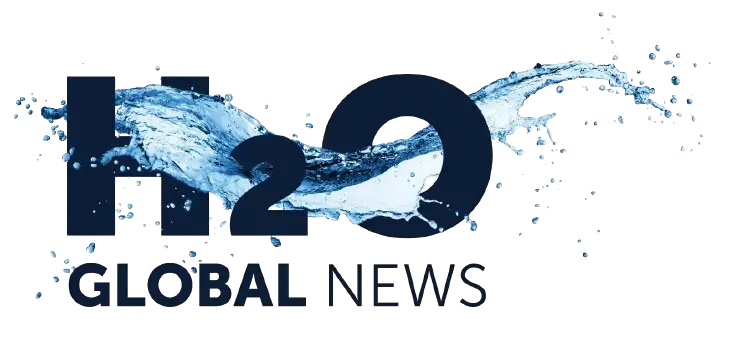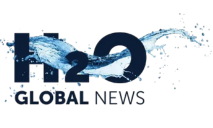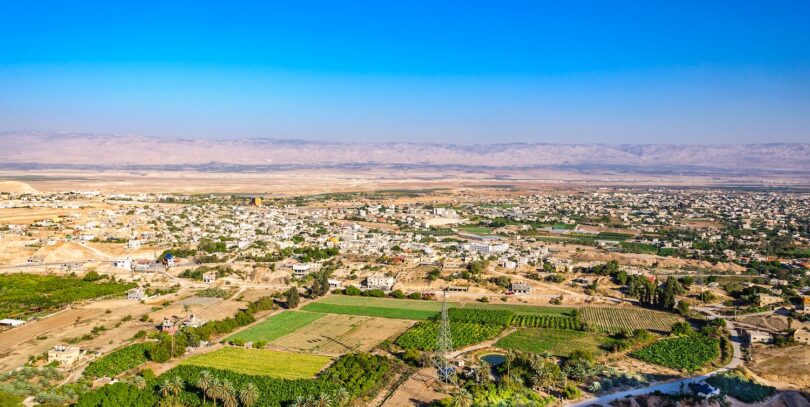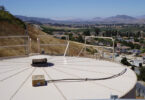Although water shortages and the unbalanced allocation of resources in Palestine’s West Bank are well understood, water quality is rarely mentioned. Yet, the critical task of maintaining clean water for drinking and irrigation is increasingly difficult given the delicate political situation.
Sobhi Yaghi, the Water Quality Monitoring Officer at Jericho Municipality, has 15 years of experience testing water resources and ensuring compliance with water quality standards. He tells us how the municipality maintains water quality under difficult circumstances and reveals their future plans.
Could you give us a background to Jericho and its water resources?
Located in the Jordan Valley, Jericho—known in Arabic as Ariha—is one of the world’s oldest continuously inhabited cities with between 35,000 and 38,000 residents. The city lies 250–260 meters below sea level, making it one of the lowest and warmest inhabited places on earth. The hot, arid climate with high evaporation rates and scarce rainfall, averaging less than 150mm annually, poses significant challenges for sustainable water resource management.
The city relies almost entirely on groundwater with its primary source, Ein Sultan Spring, providing an average flow rate of 750 cubic meters per hour. A number of groundwater wells, pumping stations, storage reservoirs, and distribution pipelines complement the municipal water supply. The water network supports extensive agriculture, accounting for over 60% of total water use, domestic consumption of 35%, with small-scale industries and services consuming the remainder.
Jericho is renowned for its rich historical significance, attracting tourists through its natural landscapes, hot springs, and ancient ruins. This combination of cultural heritage and water resource challenges makes Jericho a unique case study for integrated water quality and resource management in arid/semi-arid environments.
How do you monitor water quality and spot potential problems?
Water quality monitoring is fundamental to our water management strategy. The Jericho Municipality Water Quality Laboratory undertakes sampling, laboratory analysis, and data evaluation using internationally recognized protocols to give accurate and reliable results.
We collect water samples on a regular schedule from different points — including groundwater wells, the municipal drinking water network, irrigation systems, and treated wastewater outlets. The municipal laboratory analyses these for key physical, chemical, and microbiological parameters such as salinity (electrical conductivity), pH, turbidity, residual chlorine, nitrate, heavy metals, and bacterial indicators (total coliforms and E. coli).
In addition, specialized analyses in accredited external laboratories ensure compliance with national and WHO standards. Our dedicated wastewater laboratory performs routine checks because 65% of treated wastewater is reused for irrigating date palms.
To predict potential problems, we rely on historical water quality data, seasonal trend analysis, and GIS-based mapping of contamination risks. For example, we monitor salinity fluctuations during dry seasons, track industrial discharge patterns, and assess potential impacts from agricultural and urban activities. Sudden deviations in parameter readings trigger immediate field investigations and corrective measures in coordination with environmental authorities. This proactive monitoring framework supports preventive strategies that protect public health and sustain the region’s scarce water resources.
Some of the problems and solutions include:
Salinity and Dissolved Solids
Groundwater wells in the Jericho area show highly variable total dissolved solids (TDS), ranging between 800 and 2,500 (values fluctuate between wells and over time in the same well). By contrast, the Ain Sultan Spring exhibits much lower TDS of about 380.
High and variable salinity is driven by over-extraction, limited recharge, and local hydrogeological conditions, and affects drinking water quality and agricultural productivity. To manage salinity and TDS, we:
- Actively blend lower-salinity spring water (Ain Sultan) with higher-salinity well water before distribution to keep overall salinity within acceptable limits.
- Monitor TDS continuously to detect spikes, regulate abstraction rates to prevent further intrusion, and promote salt-tolerant crops and efficient irrigation.
Industrial Contamination/Pollutants
A significant portion of industrial pollution in Jericho stems from the desalination units used by local manufacturers, which discharge brine into municipal sewers. In the wastewater treatment plant, the high salinity disrupts the biological processes — particularly the bacteria essential for breaking down organic matter — reducing treatment efficiency and compromising effluent quality. To combat this, we:
- Work with industrial operators to implement proper brine management including on-site pre-treatment, controlled disposal outside the sewer network, or reuse in non-sensitive industrial or agricultural applications.
- Coordinate with regulatory bodies to establish guidelines and enforce local regulations requiring factories and saline well operators to dispose of brine safely through specialized treatment systems.
- Conduct awareness campaigns on the impact of brine on wastewater treatment.
- Continuous monitoring of salinity at key points in the sewer system to identify high-load discharges and take immediate corrective action.
Aging Infrastructure/Corrosion
Many municipal water pipes and storage tanks in Jericho are decades old, and often made of galvanized steel or asbestos-cement. Corrosion leads to iron, manganese, and rust particles leaching into the water, causing discoloration, unpleasant taste, and health risks. Old joints and cracks also allow infiltration of contaminants from soil or sewage lines. We implement:
- Gradual replacement of old pipelines with modern PVC, HDPE, or ductile iron pipes, and lining/rehabilitating storage tanks with corrosion-resistant materials.
- Implementing a preventive maintenance plan and leak detection system to minimize pipe failures.
Poor Wastewater Treatment
Approximately 35% of Jericho’s population remains unconnected to municipal sewers and relies on cesspits or uncontrolled discharge, so untreated wastewater infiltrates groundwater or nearby wadis. We want to:
- Expand the sewer network to cover all unserved areas, particularly peripheral communities.
- Upgrade Jericho’s wastewater treatment plant to include tertiary treatment processes and dedicated systems for managing high-salinity brine prior to entering biological treatment units.
- Establish decentralized wastewater treatment units in areas difficult to connect to the main network, such as constructed wetlands or compact modular treatment plants.
Lack of Data
There is a shortage of reliable, up-to-date water quality and quantity data in Jericho. Existing records are often fragmented, outdated, or incomplete, making it difficult to assess current conditions, identify trends, or respond to emerging issues. We intend to:
- Establish a continuous water quality monitoring network using online sensors to track key parameters such as pH, turbidity, conductivity, residual chlorine, and temperature.
- Develop a centralized digital water quality database accessible to relevant authorities, municipalities, and laboratories.
- Implement regular and standardized sampling protocols, including advanced laboratory testing for chemical, microbiological, and emerging contaminants.
- Train municipal staff and water operators in rapid field testing, data recording, and early warning response procedures.
Other Issues
To counteract discharge from Israeli settlements, we intend:
- Continuous monitoring of inflow points from upstream areas.
- Engagement with international organizations to enforce wastewater treatment standards.
- Construction of local interception and treatment systems where required.
For over-abstraction of groundwater, we support:
- Introduction of pumping quotas and improved monitoring of abstraction rates.
- Promotion of alternative water sources, including treated wastewater for irrigation.
- Initiation of managed aquifer recharge projects to prevent saline intrusion.
Finally, to combat agricultural runoff, we want to:
- Implement of Integrated Pest Management (IPM) and precision fertilization.
- Establish of buffer zones between farmlands and water sources.
- Promote of environmentally friendly farming practices.
What are the main barriers?
Political difficulties mean a limited control over upstream sources, including settlements, which complicates the enforcement of wastewater regulations. Coordination with multiple authorities and international organizations can be slow and challenging.
The lack of financial resources limits rehabilitation and expansion projects, and makes it difficult to upgrade infrastructure, modernize treatment plants, and install monitoring systems. A lack of expertise and trained personnel in advanced water treatment, monitoring technologies, and aquifer recharge techniques requires continuous capacity-building programs for municipal staff and local engineers.
Other barriers include limited understanding of water conservation and pollution prevention among the public and water users. Technical limitations include challenges in accessing certain groundwater sources or implementing Managed Aquifer Recharge (MAR) projects due to geological conditions. Finally, environmental factors mean saline intrusion and seasonal fluctuations in water availability can restrict solution effectiveness.
What organisations do you work with?
Jericho Municipality collaborates with several organizations to improve water quality, support infrastructure development, and enhance water management. Nationally, the Palestinian Water Authority (PWA) and Palestinian Environmental Quality Authority (EQA) work together. Local NGOs and Research Centres implement awareness campaigns, community engagement, and technical studies related to water quality. A number of international organisations offer technical support, funding, and guidance, including:
- United Nations Development Programme (UNDP):
- United Nations Relief and Works Agency (UNRWA):
- European Union (EU) and Donor Agencies:
- World Health Organization (WHO):
- Japan International Cooperation Agency (JICA):
- United States Agency for International Development (USAID):
- International Water Management Institutes (IWMI, GIZ, etc.):
These partnerships help Jericho Municipality address water quality challenges, implement modern technologies, and comply with international standards.
What new technologies/processes would you like to adopt?
There are a number of new technologies and improvements we would like to see:
Advanced Water Treatment Technologies
- Reverse Osmosis (RO) and Nanofiltration: To treat brackish groundwater and high-salinity water sources.
- Advanced Oxidation Processes (AOPs): For removal of micropollutants, pharmaceuticals, and emerging contaminants.
- Smart Disinfection Systems: Automated, sensor-controlled chlorination or UV disinfection to maintain safe water quality levels.
Smart Water Monitoring and Management
- SCADA and IoT-based Systems: Real-time monitoring of water quality, pressure, and flow across the distribution network.
- Automated Leak Detection: AI-based sensors to detect and locate leaks rapidly, reducing water loss.
- Centralized Data Management Platforms: Integration of GIS, water quality, and usage data for decision-making and predictive maintenance.
Sustainable Groundwater Management
- Managed Aquifer Recharge (MAR): Controlled infiltration of treated wastewater to replenish aquifers and prevent saline intrusion.
- Aquifer Storage and Recovery (ASR): Temporary storage of surplus water for seasonal use.
- Groundwater Modelling Tools: Advanced software for simulation, prediction, and scenario planning.
Energy-Efficient and Eco-Friendly Solutions
- Solar-Powered Pumping Systems: Reducing dependency on electricity and diesel for water abstraction.
- Green Infrastructure for Stormwater Management: Constructed wetlands and bioswales for natural treatment and recharge.
- Resource Recovery from Wastewater: Nutrient recovery and sludge-to-energy processes to create circular economy benefits.
Community Engagement and Digital Solutions
- Smart Metering and Consumption Feedback: To promote water conservation among households and farms.
- Digital Platforms for Public Awareness: Mobile apps and dashboards to report issues, provide alerts, and share water-saving tips.
In line with the challenges and future aspirations, I am considering a doctoral thesis exploring innovative strategies for enhancing groundwater resources in arid and semi-arid regions with treated wastewater and industrial effluents.






